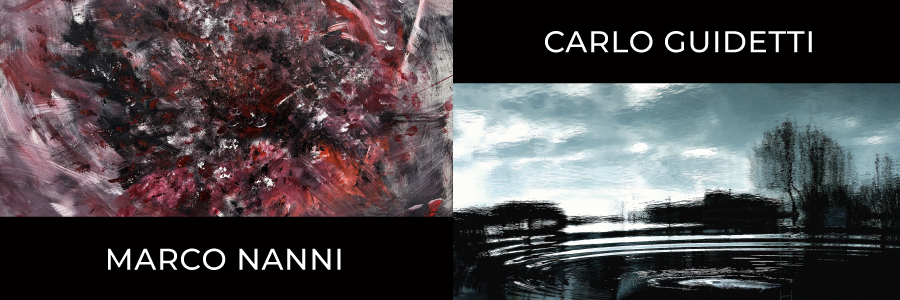MOSTRE PERSONALI DI CARLO GUIDETTI E MARCO NANNI
Scopri la mostra personale di Carlo Guidetti e Marco Nanni, tenutasi dal 14 al 26 settembre 2024 presso Galleria Wikiarte.
Passione, anima pulsante di ogni manufatto assunto a forma d’arte, declinata nell’impiego della tecnica, fotografica e pittorica. Convergente, la prima, nel ricorso alla macchina i cui scatti colgono l’emergenza emotiva dell’autore il cui animo, rigenerato dall’arte, esprime nuova e fresca libertà creativa. E divergente, se pittorica e d’azione, in cui il sentire diventa gesto, catartico e dirompente, nonché forma, tangibile e condivisa, se non specchio e continuità di un’importante tradizione.
Tra sogno e poesia, l’innegabile traccia del ricordo che permea un’arte fotografica, ora filtrata e rigenerata la cui estetica, ripresa inizialmente nella scelta di centri urbani ed aree abitate quale genere, varca la soglia del mero tecnicismo, dell’impronta tipicamente documentaristica, a favore della ricerca. Sospinta, quest’ultima ed in chiave poetica, dalla necessità interiore di evadere un contesto, di sua natura troppo matematico per il sentire del modenese Carlo Guidetti, mutando e rovesciando l’idea stessa di realtà in puro pretesto, da cui creare immagini proprie al fine di trasmetterle, meglio porgerle, agli occhi dell’osservatore. Forte l’intento sperimentale – scandito da inquadrature, movimenti, focale ed esposizione variabili impiegando dapprima un apparecchio Comet ed in seguito Nikon – in cui l’abbinamento cromatico, importante quanto accurato, contrapposto all’innato daltonismo di Guidetti, ne placa la sete di colore, permeando gli scatti di anima e corpo, ulteriormente arricchiti dal piacevole connubio artistico con il dott.Stefano Trotta il cui intervento, dove convenuto, si traduce e perfeziona nei termini di apprezzata e professionale post-produzione.
L’astrattismo lirico di Georges Mathieu, riflesso europeo dell’espressionismo astratto americano, o l’ultimo naturalismo di Bruno Pulga, definito da taglienti trame ed ampi campi di colore, e l’informale pittorico dello stesso Mario Nanni, citandone solo alcuni, tra gli artisti cui attinge il bolognese Marco Nanni. Laureato al DAMS, con specializzazione in montaggio e video-editing presso l’Accademia del Cinema, è figlio d’arte, stante le figure del padre Paolo e del nonno Bruno, quest’ultimo fondatore, nel 1954, de‘La Loggia, prima galleria d’arte moderna della città, divenuta a seguire centro culturale, curato dallo stesso artista, in cui convergono disegno, pittura, scultura e fotografia nell’intento compiuto di cogliere e soddisfare l’esigenza di continua evoluzione del comparto. Ad ulteriore compimento di una passione, la stessa per il basket, in cui leggervi l’origine di un’estetica dinamica, dalla tessitura a tratti nervosa, scandita dalla diversità degli strumenti con cui acqua ed acrilico prendono forma compiuta, in cui vibra la spontaneità di un gesto, quel gesto spesso serale, la cui musica che l’accompagna ne riprende l’armonia.
Curatore: Pietro Franca











